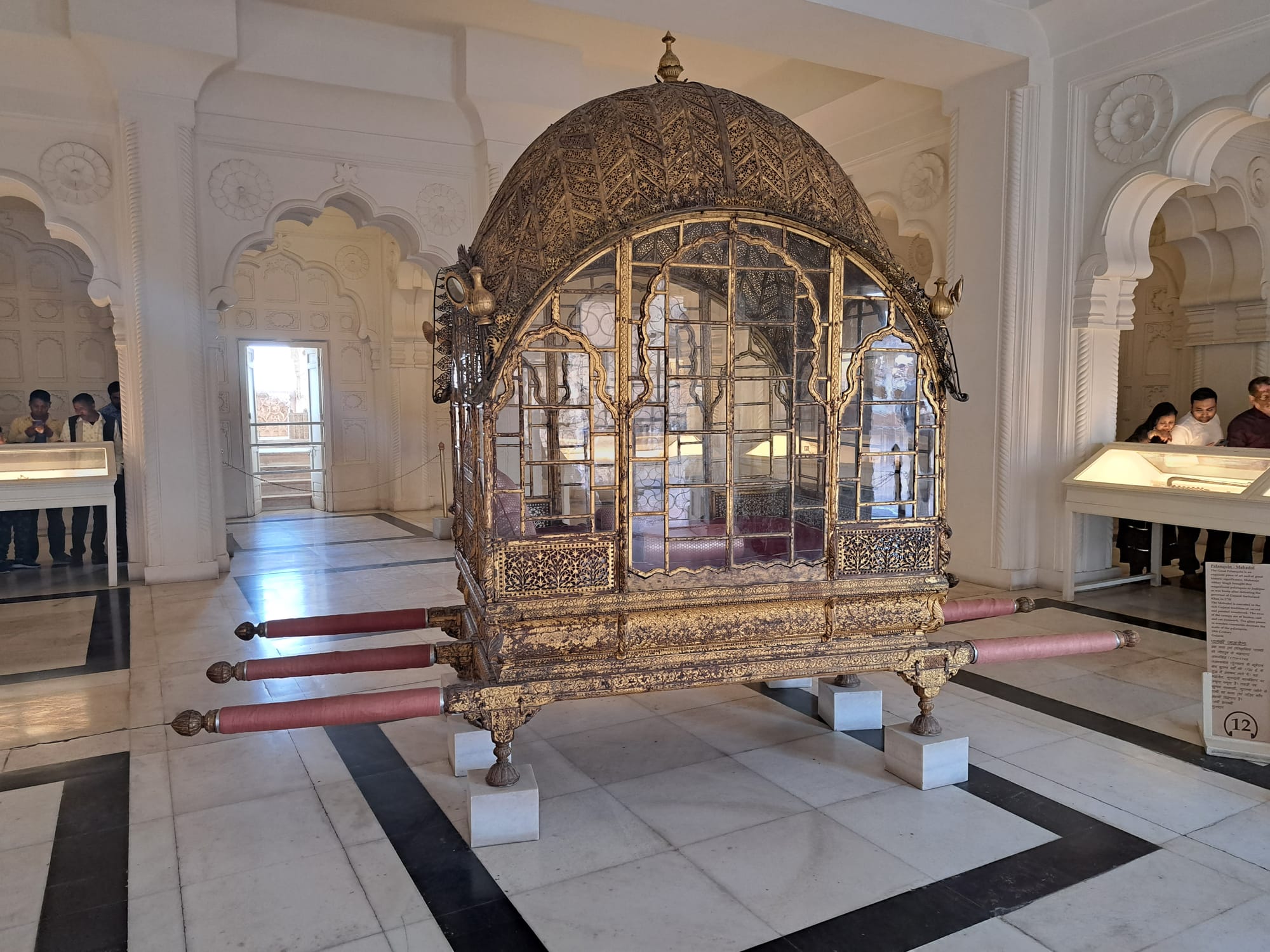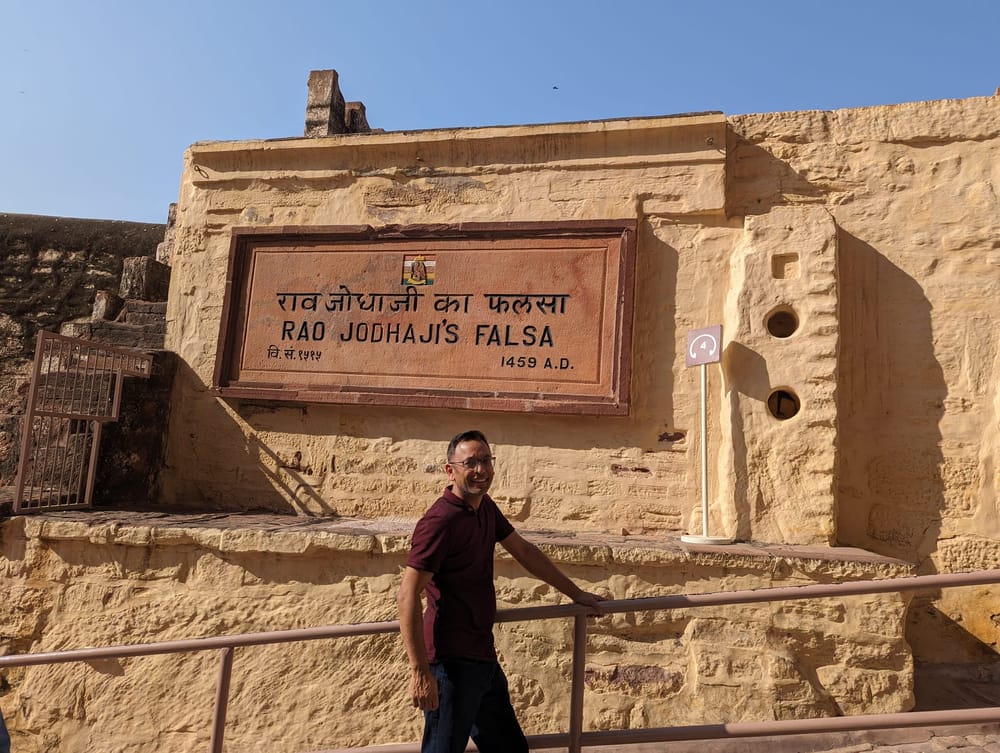Exploring Rajasthan’s Blue City: A Journey Through Jodhpur and Mehrangarh Fort
My recent trip to Jodhpur, the Blue City of Rajasthan was a captivating journey through a landscape painted in tones of blue and decorated with history. Known for its rich cultural heritage, Jodhpur is a city that effortlessly blends its royal past with modern appeal. The highlight of my visit was exploring the magnificent Mehrangarh Fort, a bastion of history perched high above the city. This blog chronicles my experiences in Jodhpur, with a special focus on the architectural marvels, the influence of the British Empire, and the enchanting Mehrangarh Fort.
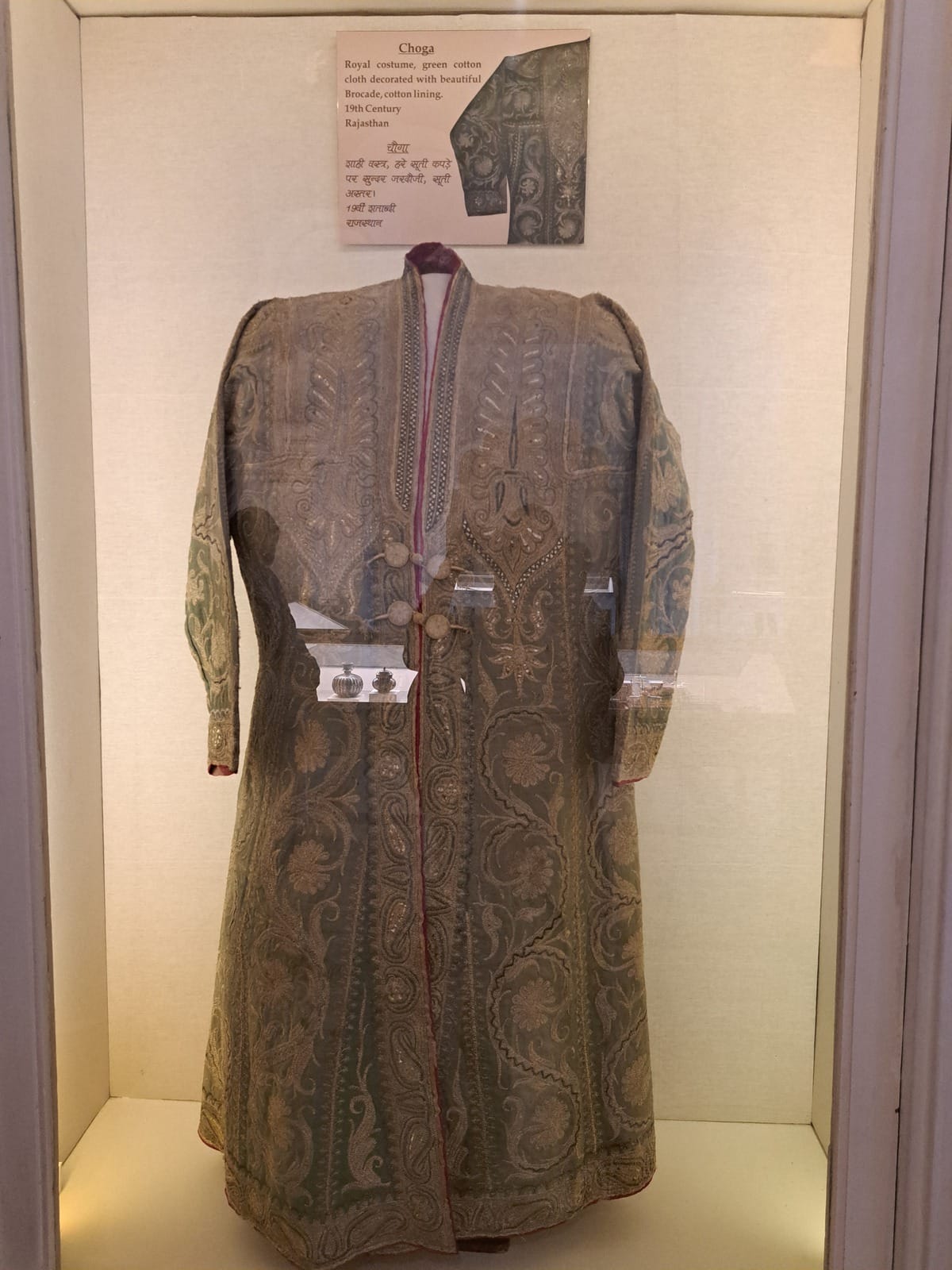
The Blue City: Jodhpur
Jodhpur, famously dubbed the Blue City, is a sensory delight. The city's name comes from the blue-painted houses that fill the old town, a tradition that originally signified the homes of Brahmins but later became widespread.
The bustling Sardar Market, with its iconic clock tower, was a vibrant hub of activity. Here, I explored stalls brimming with spices, textiles, and handicrafts, all echoing the rich cultural tapestry of Rajasthan. The market was a sensory overload in the best possible way, providing a perfect introduction to the local life and traditions.
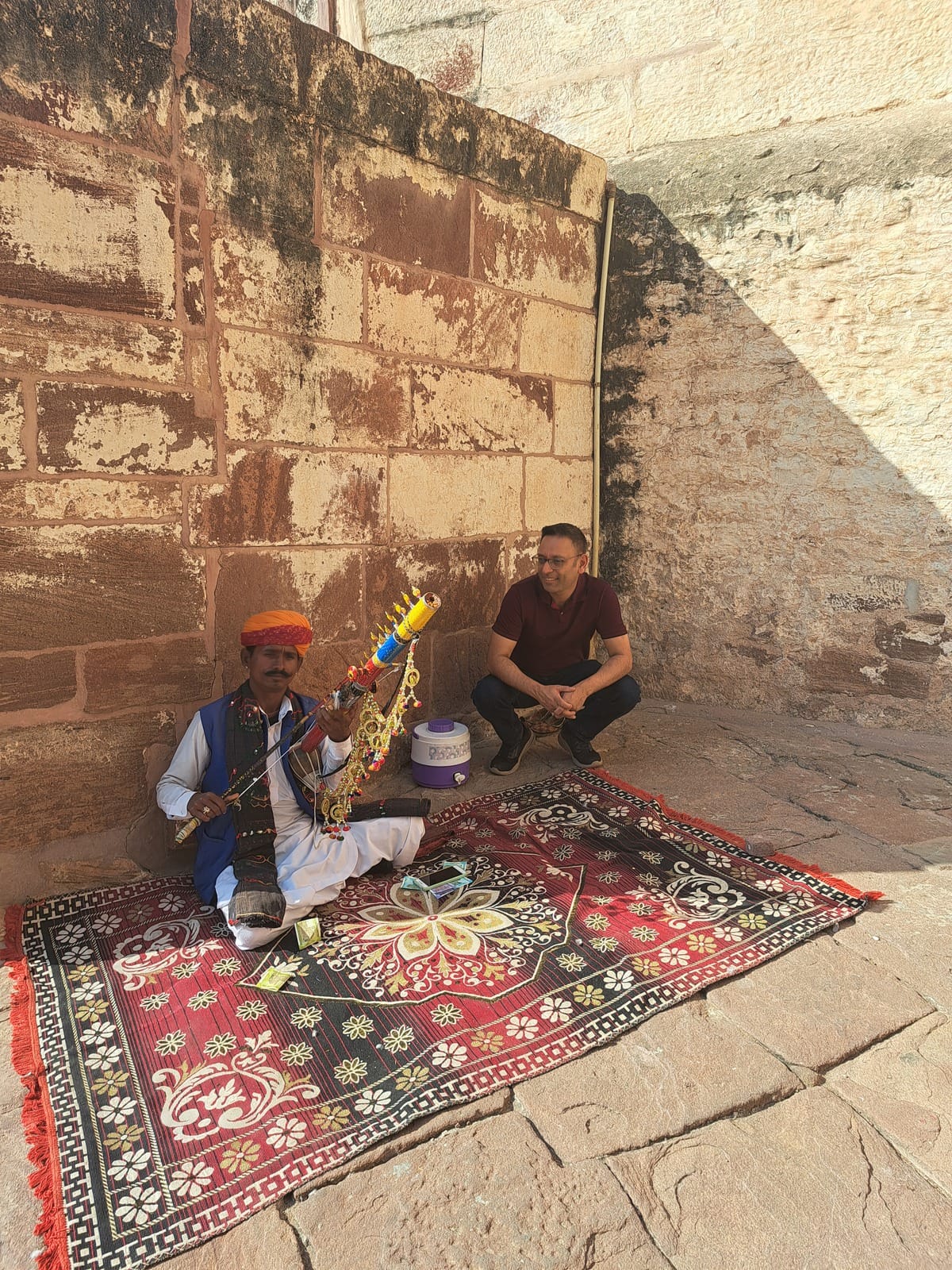
Mehrangarh Fort: A Majestic Marvel
Mehrangarh Fort, one of India’s largest and most magnificent forts, stands as a testament to Jodhpur's royal heritage. Founded by Rao Jodha in 1459, the fort's imposing structure and strategic location make it a prominent landmark.
Architecture: As I approached the fort, its massive walls and carved entrances were amazing. Each of the seven gates narrates tales of bravery and victory. Inside, the palaces like the Phool Mahal (Flower Palace) and the Sheesh Mahal (Mirror Palace) showcased the riches and artistic brilliance of Marwar’s rulers.
Museum Treasures: The Mehrangarh Museum housed within the fort is a treasure trove of artifacts, offering a glimpse into the region's royal past. The collection of armoury, paintings, and costumes was fascinating, each piece telling a story of the fort’s historical and cultural significance.
Panoramic Views: The fort's walls provided breathtaking views of Jodhpur’s blue region. From this vantage point, it felt like stepping into a scene from a historical epic, with the city unfolding beneath like a living tapestry.
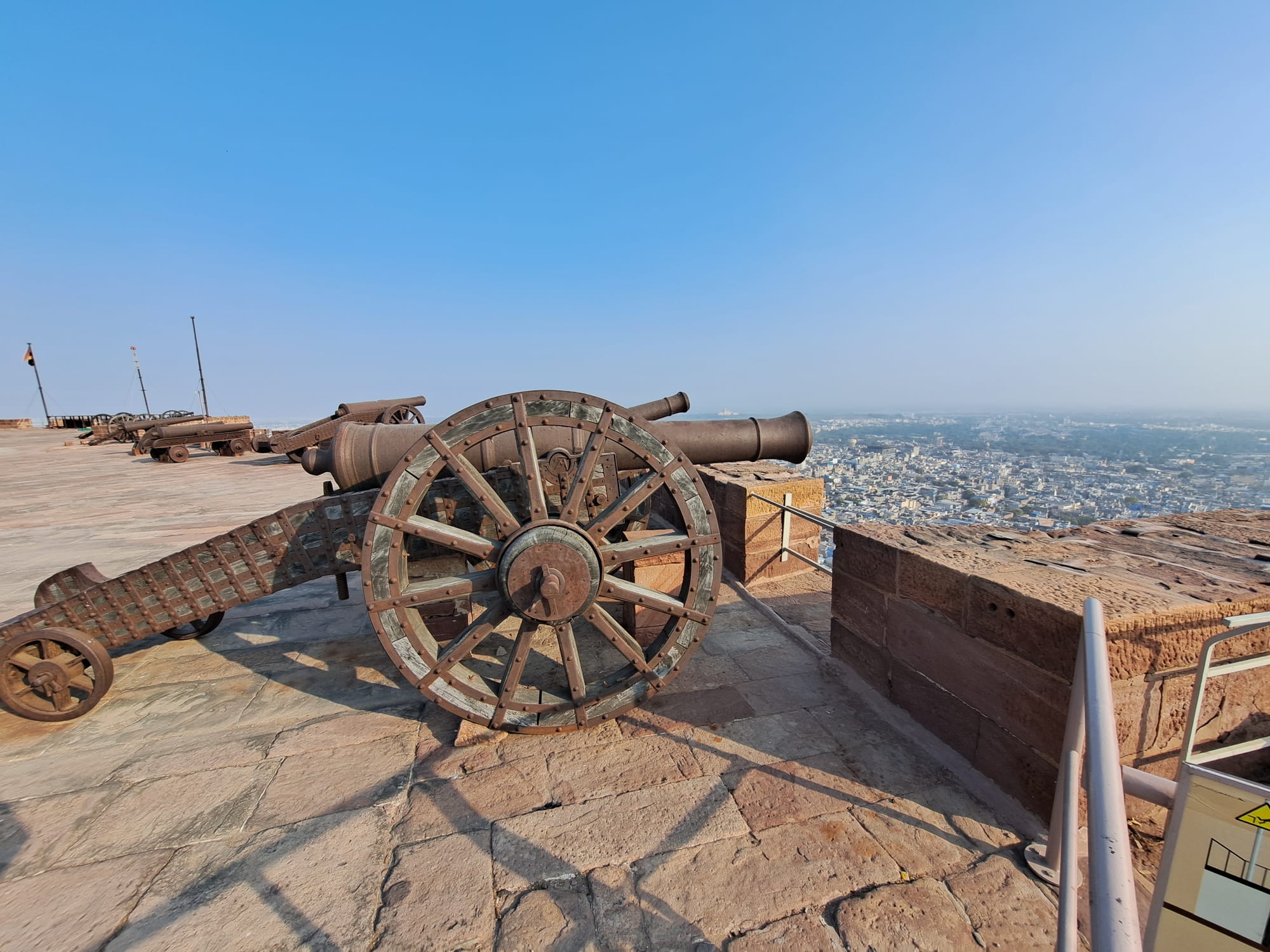
The British Influence
The British Empire's presence in Rajasthan left an indelible mark on the region, blending British architectural styles with traditional Rajputana elegance. In Jodhpur, this influence is evident in several buildings and the modernisation efforts during the British Raj.
One of the most notable examples of this architectural fusion is the Umaid Bhawan Palace. Commissioned by Maharaja Umaid Singh in 1929 and completed in 1943, the palace was designed by the British architect Henry Lanchester. The palace, which now serves as a luxury hotel and museum. Its grandness and scale reflect the aspirations of the princely state under British influence.
The British era also saw the introduction of various reforms in education and administration, leaving a lasting impact on the city's development. The Maharaja's decision to build schools, hospitals, and administrative buildings in Western styles significantly influenced the urban landscape of Jodhpur.
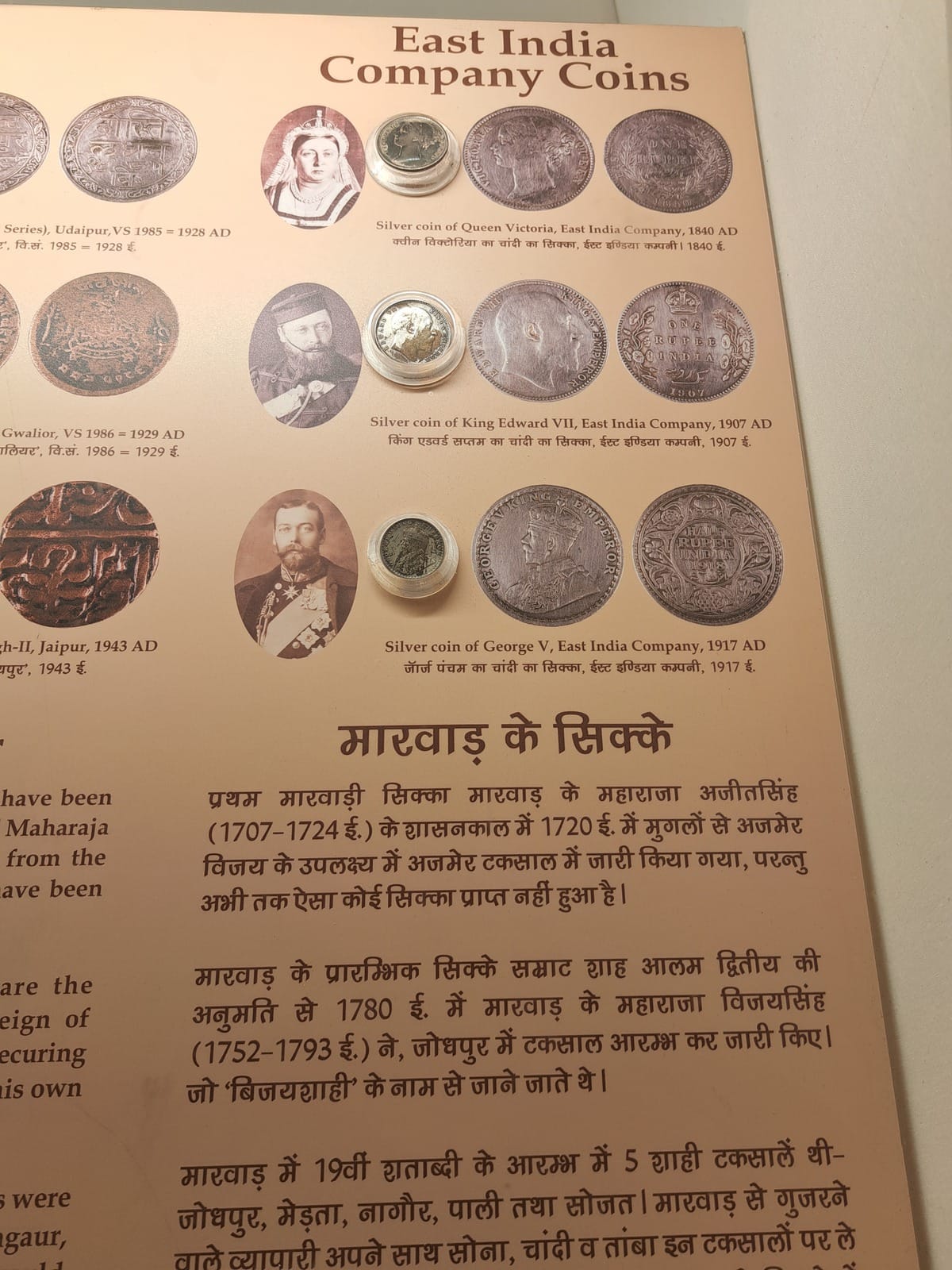
Conclusion
My trip to Jodhpur was a journey through time. Exploring Jodhpur and Mehrangarh Fort was an unforgettable experience, blending the mystique of ancient Rajasthan with the echoes of its colonial past. Jodhpur offers a unique and enriching experience that captures the essence of India's diverse heritage. A truly educational experience with moments of reflection and admiration for the wonderful city.
